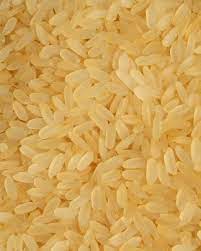Parboiled Rice:

Telangana Chief Minister K Chandrashekar Rao staged a dharna at Telangana House, demanding a uniform paddy procurement policy.
- The protest came after the Centre said it was stopping the purchase of excess parboiled rice, of which Telangana is a major producer.
- Parboiled rice refers to rice that has been partially boiled at the paddy stage, before milling.
- Parboiling of rice is not a new practice, and has been followed in India since ancient times.
- There are several processes for parboiling rice.
- The Paddy Processing Research Centre (PPRC), Thanjavur follows a method known as the chromate soaking process.
- All processes generally involve three stages—soaking, steaming and drying.
- After passing through these stages, the paddy goes for milling.
- Parboiling makes rice tougher.
- This reduces the chances of the rice kernel breaking during milling.
- Parboiling also increases the nutrient value of the rice.
- Third, parboiled rice has a higher resistance to insects and fungi.
- Drawbacks:
- The rice becomes darker and may smell unpleasant due to prolonged soaking.
- Besides, setting up a parboiling rice milling unit requires a higher investment than a raw rice milling unit.




